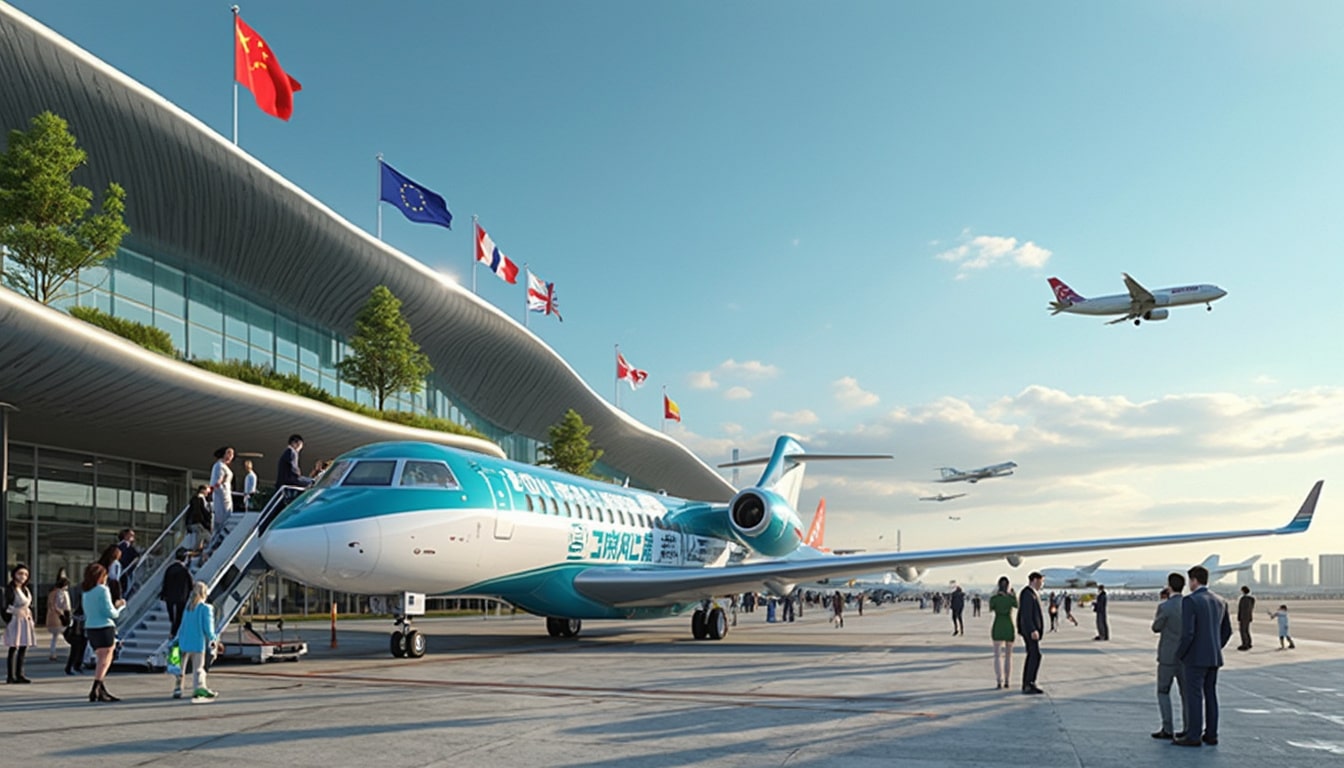Considering a potential European certification by 2025, Comac’s C919 could disrupt the global aerospace landscape. Entering into direct competition with established giants, Airbus and Boeing, this Chinese aircraft is part of an ambitious strategy to diversify the offering in the single-aisle market. With a potential order attracting the attention of airlines seeking new solutions, the C919, if it conquers European skies, would create an unprecedented dynamic, challenging Western dominance in the sector.
If the C919 from Comac receives its European certification by 2025, this could mark a significant turning point in the global aviation sector. Indeed, this advancement would allow Comac to enter the European market, traditionally dominated by the Airbus–Boeing duopoly. Although geopolitical tensions and limited infrastructure could impact this expansion, the C919 could still offer an attractive alternative, especially for airlines recently affected by the production challenges of their Western rivals. Comac also hopes to reduce its dependence on European and American equipment by favoring local suppliers in the long term.

Table des matières
Toggleimpact on the Airbus-Boeing duopoly
If the C919 from Comac received its certification in Europe by 2025, the balance of the aviation market could experience significant changes. Although the Airbus-Boeing duopoly has resisted for decades, the introduction of a new player validated by European regulators would signal a potentially growing challenge for these two giants. The presence of a certified competitor in Europe could lead to a reconfiguration of markets, with a price war and new marketing strategies to maintain their market share.
The certification of the C919 would not automatically mean market dominance, particularly due to Comac’s current limited production capacity, which would need to accelerate to compete effectively with its Western rivals. Nevertheless, the mere possibility of such competition could push Airbus and Boeing to optimize their delivery processes and invest more in innovation.
repercussions on the aviation market in China
For the Chinese market, obtaining certification in Europe for the C919 would strengthen the import substitution policy and give a boost to the local aerospace industry. By limiting its dependence on foreign aircraft, China could develop its own ecosystem of suppliers and enhance its technological capabilities. This localization strategy is part of China’s broader industrial project to reduce foreign dependence and consolidate its national expertise, with positive implications for its entire economy.
challenges and opportunities for Comac
One of the main difficulties for Comac lies in the current limitations of maintenance infrastructures. Maintenance, essential for the reliability and safety of aircraft, poses a significant challenge for the potential global expansion of the C919. Furthermore, geopolitical tensions disrupt trade relations with certain powers, particularly the United States, which could slow down the FAA certification process, crucial for international markets.
However, Comac may see here an opportunity for strategic expansion. By investing locally in infrastructure and technical training, the company could attract new talent and strengthen its production capabilities. Furthermore, as Comac aims to target the Asian market, regions such as Southeast Asia, the gradual awareness of the advantages of the C919 could facilitate its adoption, establishing it as a credible alternative against established giants.





